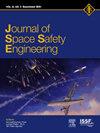月球遇险通信:互操作性、频率和有害干扰,阿耳特弥斯协定的哪种规范模式?
IF 1.7
Q3 ENGINEERING, AEROSPACE
引用次数: 0
摘要
一个新的太空时代开始于《阿尔忒弥斯协定》。这将允许人类重返月球。2020年10月13日签署的这项国际协议标志着这一历史时期的起点。这些协定的起源地是八个国家:美利坚合众国、澳大利亚、加拿大、意大利、日本、卢森堡、阿拉伯联合酋长国和联合王国。从那时起,包括法国在内的其他13个国家的政府加入了这个由美国宇航局领导的国际太空计划。阿尔忒弥斯将需要实施一种名为“月球网”的新通信架构,包括被称为“月球雷达”的搜索和救援服务。因此,就像在地球和月球上一样,搜救遇险人员将需要国际通信的互操作性。从法律的角度来看,《阿尔忒弥斯协定》是基于现有的空间法,特别是1967年的《外层空间条约》。根据这一原则,月球任务应用于和平目的。执行国际伙伴关系的透明度是这一空间方案的另一项关键原则。由此,在操作级别上,基于现有或未来标准的系统互操作性自然随之而来。除了技术和商业方面,为完成阿尔忒弥斯计划而工作的宇航员的安全比其他所有考虑都更重要。因此,一般来说,联合国关于外层空间的条约和原则预见到可能向遇险宇航员提供的援助。关于阿尔忒弥斯计划的实施,人员将在航天器、空间站或月球表面操作。这就是为什么美国宇航局计划实施宇航员的月球生命线,即月球搜索和救援(LunaSAR)。与LunaNet系统相结合,该系统将帮助处于困境中的工人。因此,在本研究中,我们将重点关注搜救遇险人员背景下的通信互操作性标准。为此,我们将通过卫星辅助地球搜索和救援原理和技术的镜头来检查阿尔忒弥斯计划。我们将特别关注搜救卫星系统(COSPAS-SARSAT)警报服务和《国际航空和海上搜救手册》。在这方面,例如执行1967年《关于各国探索和利用外层空间包括月球与其他天体活动所应遵守原则的条约》、《拯救宇航员协定》等问题,将讨论1968年《宇航员返回和发射到外层空间的物体返回》和1979年《关于各国在月球和其他天体上活动的协定》以及保护SAR频率和潜在有害干扰的问题。本文章由计算机程序翻译,如有差异,请以英文原文为准。
Lunar distress communications: Interoperability, frequencies, and harmful interference, which normative model for the artemis accords?
A new space era begins with the Artemis Accords. These will allow the return of humans to the Moon. The starting point of this historic period was marked by the signing of this international agreement on October 13, 2020. Eight States are at the origin of these accords: the United States of America, Australia, Canada, Italy, Japan, Luxembourg, the United Arab Emirates, and the United Kingdom. Since then, thirteen other governments – including France – have joined this international space program led by NASA. Artemis will require the implementation of a new communication architecture called “LunaNet”, encompassing the search and rescue service known as “LunaSAR”. Therefore, like on Earth, on the Moon, search and rescue of people in distress will require the interoperability of international communications. From a legal point of view, the Artemis Accords are based on existing space law, particularly the 1967 Outer Space Treaty. According to this, Lunar missions shall be conducted for peaceful purposes. Transparency in the implementation of international partnerships is another key principle of this space program. From this, at the operational level, interoperability of the systems based on existing or future standards naturally follows. Beyond the technical or commercial aspects, what takes precedence over all other considerations is the safety of the astronauts working for the completion of the Artemis program. Thus, generally, the possible assistance brought to the astronauts in distress is foreseen in the United Nations treaties and principles on outer space. Regarding the implementation of the Artemis program, personnel will operate on board a spacecraft, a space station, or from the surface of the Moon. This is why NASA plans to implement the Astronaut's Lunar Lifeline, known as Lunar Search and Rescue or LunaSAR. Integrated with the LunaNet system, this system will assist workers in distress. In this study, therefore, we will focus on standards for communications interoperability, in the context of search and rescue of persons in distress. To do so, we will examine the Artemis program through the lens of satellite-assisted Earth search and rescue principles and techniques. In particular, we will focus on the COSPAS-SARSAT alerting service and the International Aeronautical and Maritime Search and Rescue (IAMSAR) Manual. In this context, issues such as, for example, the implementation of the Treaty on Principles Governing the Activities of States in the Exploration and Use of Outer Space, including the Moon and Other Celestial Bodies of 1967, the Agreement on the Rescue of Astronauts, the Return of Astronauts and the Return of Objects Launched into Outer Space of 1968 and the Agreement Governing the Activities of States on the Moon and Other Celestial Bodies of 1979 as well as the protection of SAR frequencies and potential harmful interference will be addressed.
求助全文
通过发布文献求助,成功后即可免费获取论文全文。
去求助
来源期刊

Journal of Space Safety Engineering
Engineering-Safety, Risk, Reliability and Quality
CiteScore
2.50
自引率
0.00%
发文量
80
 求助内容:
求助内容: 应助结果提醒方式:
应助结果提醒方式:


